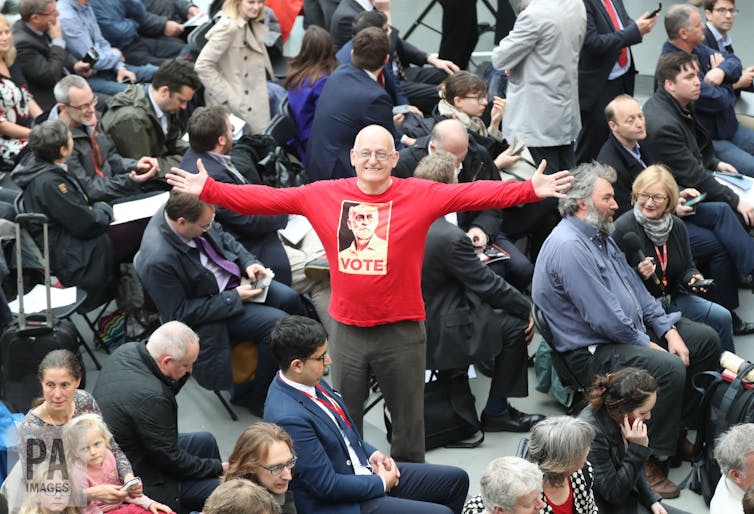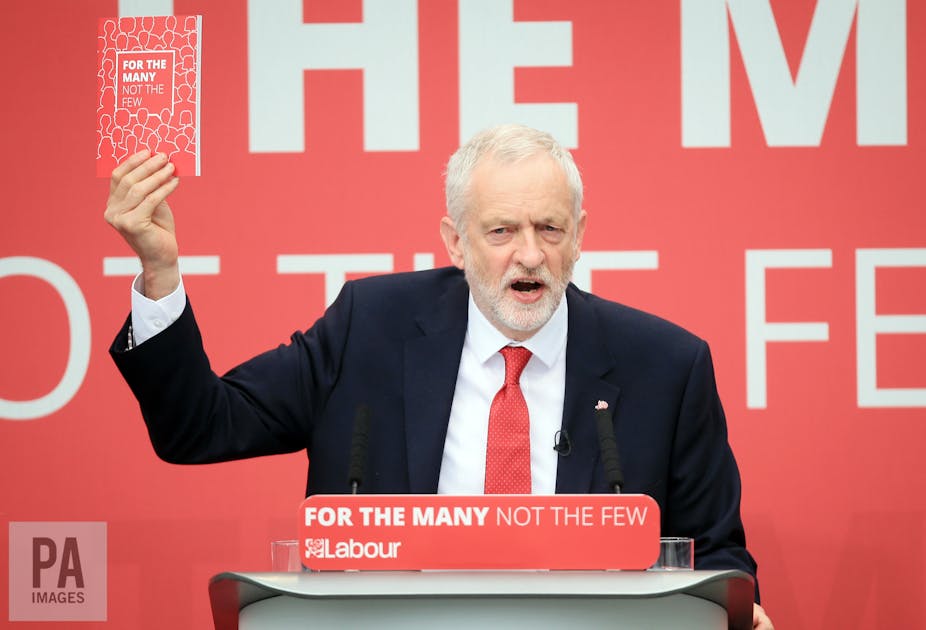In formally launching the Labour Party’s 2017 general election manifesto in Bradford, Jeremy Corbyn has promised to deliver a “programme of hope” to achieve a “better, fairer Britain” by aspiring to benefit the “many not the few”.
For years, significant numbers of British voters have complained that all parties appear to be the same. Some have argued that this may explain the historically low election turnouts of recent times. But with Labour’s explicit advocacy of more public spending, more tax and more borrowing to “rebalance” the economy, it’s now clearly the case that the two main parties are not the same.
Perhaps as expected, some of the pro-Conservative media was quick to report the manifesto’s potential implications in a typically alarmist manner. There were allusions to a “huge tax assault” that seemed designed to frighten aspirational Middle England voters.
Nevertheless, by pledging to raise an additional £48.6 billion in tax revenue to fund its bold pledges, Corbyn’s Labour is offering a programme that it claims is both “radical and responsible”.
Key points
There are Labour moderates who never envisaged that the party would take such a path again, but many of the promises in this manifesto do hark back to a different political era.
Increasing income tax to 45 pence in the pound for those earning more than £80,000 and 50 pence for those earning in excess of £123,000 per year, is a particularly striking example. Labour claims it can generate £6.4 billion from these increases and that 95% of the population will be unaffected.
Then there are promises to renationalise key industries – including the Royal Mail, the railways and water – alongside a pledge not to raise VAT or national insurance, and another to introduce a “living wage” of £10 an hour. The latter is estimated to be able to boost the incomes of 5.7m low earners.

There’s also a proposal to charge a levy on companies that pay employees more than £330,000 per year. Some have described it as a “fat cat tax”.
The manifesto also pledges to establish a so-called additional “Robin Hood” tax on financial transitions costing £5.6 billion, and an increase in corporation tax from the current 19% to 26% by 2022. Labour has claimed that a further £6.5 billion can be raised for its public spending plans by more aggressive tax avoidance measures being implemented.
In terms of broader social policies, university tuition fees would be scrapped under Labour, at a cost of over £11 billion, Conservative welfare reforms – such as the bedroom tax – would be reversed. That, and additional funds to bolster universal credit and housing benefit would cost an estimated £4 billion. Labour also wants to build a million new homes, at least half of which will be social housing for people on lower incomes.
A new direction
As indicated when some elements of the manifesto were leaked ahead of its publication, Labour’s aggressive tax and spend represents a radical new direction away from its broad electoral strategy since the 1980s. The full manifesto seems to be even bolder than the leaked version suggested. It essentially focuses on asking the better off and large companies to pay more tax to fund improved public services. Whether this stifles the electoral support of aspirational and vital middle-class voters towards the Labour message remains to be seen.
Labour’s manifesto is a rejection of post-2010 austerity and has a full-blown socialist narrative behind it. It embraces the idea that voters demand something different in order to be able to distinguish the main parties from one another. It also appears to stubbornly defy the New Labour mantra that you must appeal to the centre ground of politics and that you can’t win elections from a left-wing, tax-raising position – even if that’s a theory that seems to have been upheld by recent opinion polls.
What the 2017 Labour manifesto ultimately illustrates therefore is a clear break with the years of political consensus that broadly covered the 1979 to 2010 governments of Margaret Thatcher, John Major, Tony Blair, Gordon Brown and David Cameron.
There were some notable political and ideological differences between Cameron and Ed Miliband in 2015, but this time Labour is striking out in an entirely different way. Whether the decision turns out to be bold or simply foolish remains to be seen on June 8, but it is at least giving voters a genuine choice between two absolute alternatives.

